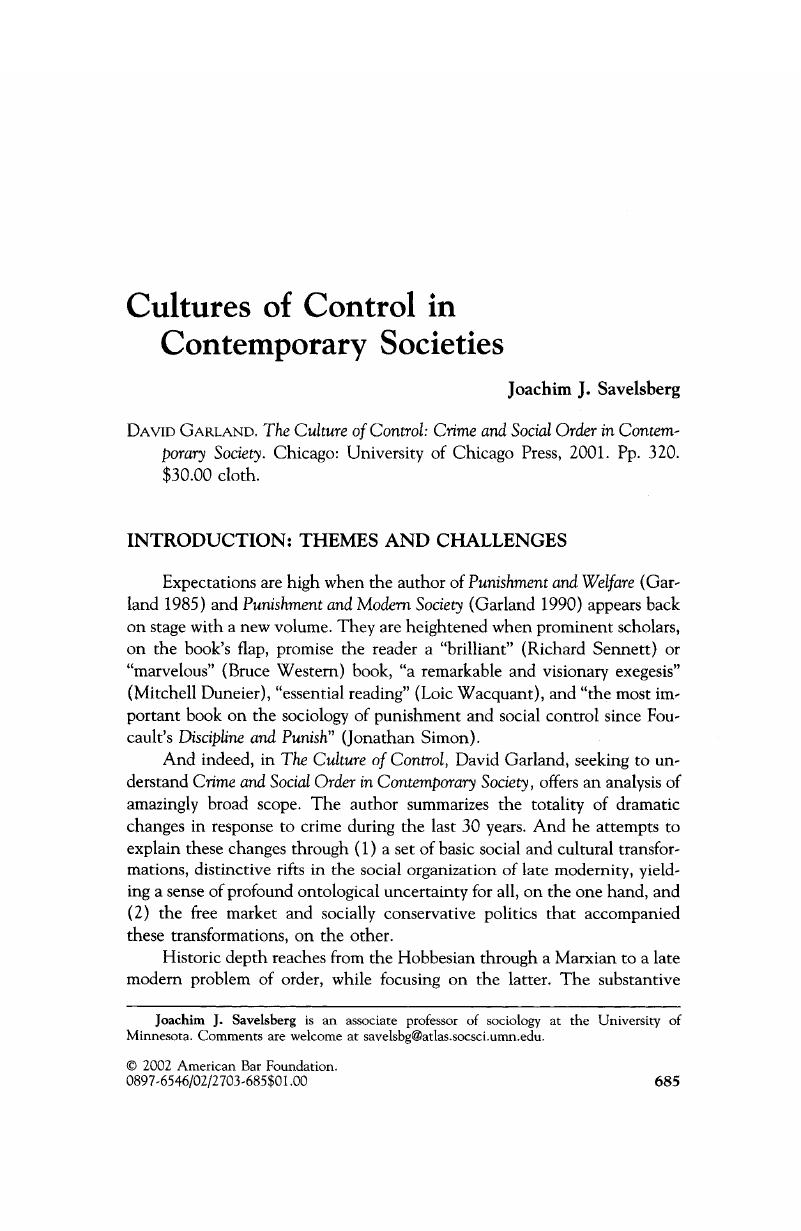Crossref Citations
This article has been cited by the following publications. This list is generated based on data provided by Crossref.
Machura, Stefan
2003.
Soziologische Forschung: Stand und Perspektiven.
p.
415.
GARLAND, DAVID
2004.
Beyond the culture of control.
Critical Review of International Social and Political Philosophy,
Vol. 7,
Issue. 2,
p.
160.
Garland, David
2006.
Concepts of culture in the sociology of punishment.
Theoretical Criminology,
Vol. 10,
Issue. 4,
p.
419.
Brown, Elizabeth K.
2006.
The dog that did not bark.
Punishment & Society,
Vol. 8,
Issue. 3,
p.
287.
Willis, James J.
2008.
Punishment and the cultural limits to state power in late 18th-century Britain.
Punishment & Society,
Vol. 10,
Issue. 4,
p.
401.
Sack, Fritz
2008.
Exklusion in der Marktgesellschaft.
p.
301.
Hallett, Michael
2009.
Imagining the global corporate gulag: lessons from history and criminological theory.
Contemporary Justice Review,
Vol. 12,
Issue. 2,
p.
113.
DeMichele, Matthew T.
2010.
A Regime Theory Approach to Cross-National Incarceration Rate Variation: Three Worlds of Western Punishment, 1960-2002.
SSRN Electronic Journal,
Sack, Fritz
2013.
Social structure and crime policy: The German case.
Punishment & Society,
Vol. 15,
Issue. 4,
p.
367.
Hamilton, Claire
2013.
Punitiveness and political culture: Notes from some small countries.
European Journal of Criminology,
Vol. 10,
Issue. 2,
p.
154.
Pickett, Justin T.
Mears, Daniel P.
Stewart, Eric A.
and
Gertz, Marc
2013.
Security at the Expense of Liberty.
Crime & Delinquency,
Vol. 59,
Issue. 2,
p.
214.
Dollinger, Bernd
and
Kretschmann, Andrea
2013.
Punishment in Europe.
p.
132.
Goodman, Philip
Page, Joshua
and
Phelps, Michelle
2015.
The long struggle: An agonistic perspective on penal development.
Theoretical Criminology,
Vol. 19,
Issue. 3,
p.
315.
Zysman Quirós, Diego
2018.
The Palgrave Handbook of Criminology and the Global South.
p.
991.
Savelsberg, Joachim J
2018.
Punitive turn and justice cascade: Mutual inspiration from Punishment and Society and human rights literatures.
Punishment & Society,
Vol. 20,
Issue. 1,
p.
73.
Savelsberg, Joachim J.
and
Powell, Amber Joy
2020.
The New Handbook of Political Sociology.
p.
513.
Maulidiyah, Dewi Nur
2024.
Consensus on the role of culture in restraining financial crime: a systematic literature review.
Journal of Financial Crime,
Vol. 31,
Issue. 4,
p.
883.



